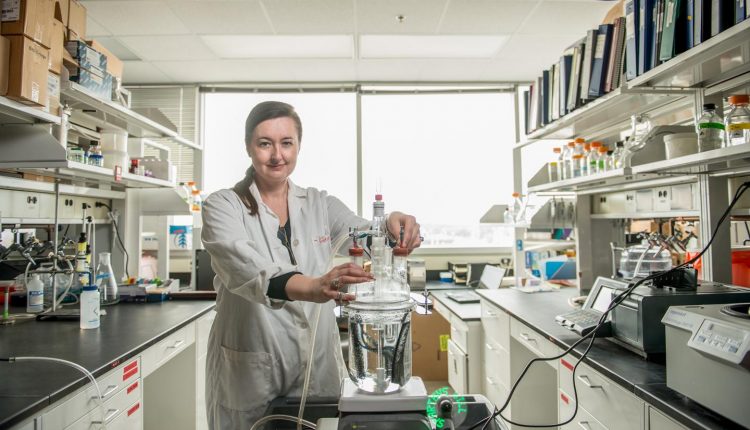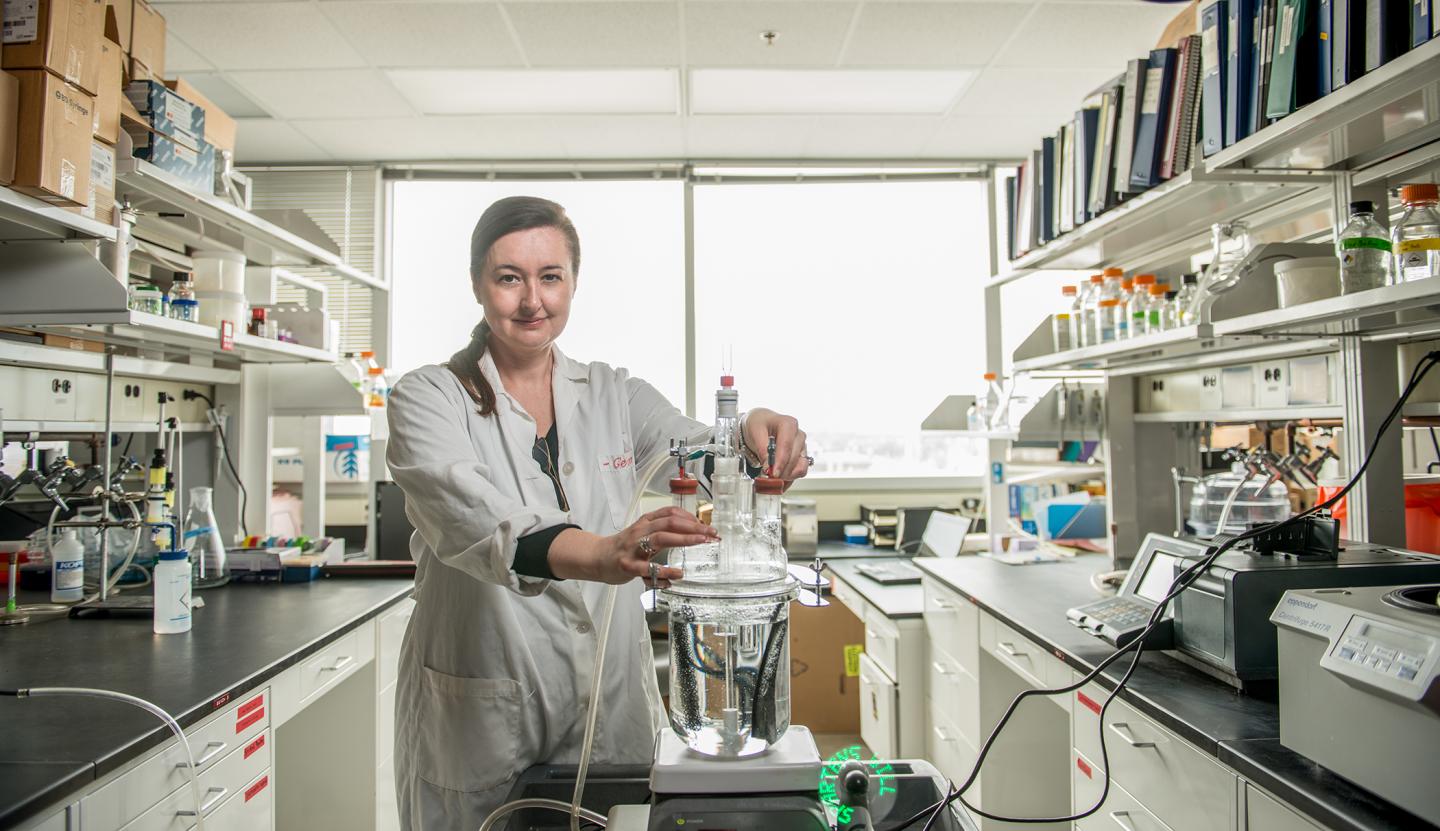
Bioelectrodes ready to start generating electricity at the industrial level
Michigan State University researchers have demonstrated that Geobacter bacteria can grow as films on electrodes and generate electricity. The researchers are now ready to take this process to the industrial level.
The thick biofilm, which is similar to a gelatin, is comprised of a combination of cells that are loaded with cytochromes, metal-based proteins, and pili, hairlike protein filaments discovered and patented by MSU’s Gemma Reguera, associate professor of microbiology.

The biofilms are similar to that of an electrical grid in that each cell is a power plant that generates electrical discharges that are delivered to the underlying electrode using a network of cytochromes and pili. The cytochromes are like the transformers and towers supplying electricity to the city, while the pili represent powerlines that connect the towers to the grid.
“The pili do all of the work after the first 10 layers, and allow the cells to continue to grow on the electrode, sometimes beyond 200 cell layers, while generating electricity,” said Reguera, who co-published the paper with MSU graduate student Rebecca Steidl and MSU postdoctoral student Sanela Lampa-Pastirk, who work in Reguera’s lab. “This is the first study to show how electrons can travel such long distances across thick biofilms; the pili are truly like powerlines, at the nanoscale.”
The cytochromes lose their transfer speed once they get farther away and without the wires, you can’t continue to grow the biofilm on the electrode.
The approach to dissect the contribution and interactions between the cytochromes and the pili was the key to this discovery. The researchers employed a genetic approach to eliminate key electron carriers in the biofilms, cytochromes and conductive pili, and studied the effect of the mutations in the growth of the biofilm and ability to generate electricity. They also constructed a mutant that produced pili with reduced conductivity.
“We used the mutants to grow biofilms of precise thickness and capacity to produce electricity,” Reguera said. “This information allows us to reconstruct the paths – cytochromes or pili – used by the cells to discharge electrons across the biofilm and to the underlying electrode.”
The researchers found that the biofilm is mechanistically stratified as it grows in thickness on the electrode without compromising electricity generation.
“We went from constructing the cell equivalent of a 10-story building to a 15- and a 20-story building and demonstrated the coordinated action of cytochromes and pili in the bottom floors and the need to discharge electrons via the wires in the upper floors to grid,” Reguera said. “We know that we can build 200-story buildings, which really opens up opportunities for which these biofilms can be used.”
The bioelectrodes are ready to be scaled up and used to clean up industrial sites while producing electricity as a byproduct. The research team will now explore a potential spin-off company to bring the bioelectrodes to market.

Comments are closed, but trackbacks and pingbacks are open.